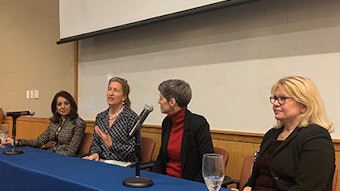Culture and Engagement in Your Practice
Scenario: A busy and productive otolaryngology practice struggles to manage personnel issues effectively while keeping up the pace and delivering the quality of patient care that the practice is accustomed to providing. This is not an unusual situation, and how it is managed can affect the entire practice.

Scenario
A busy and productive otolaryngology practice struggles to manage personnel issues effectively while keeping up the pace and delivering the quality of patient care that the practice is accustomed to providing. This is not an unusual situation, and how it is managed can affect the entire practice.
Practice statistics
5 physicians, 1 administrator, 3 APPs, 3 audiologists, 2 RNs, 3 CMAs, and 35 additional support personnel with numerous ancillaries.
Situation
With 52 people working in a busy environment, there are bound to be personnel issues, and who has time to deal with all of them? It seems as if there is barely a day without a fire to put out; staff morale is low, with those in charge not sure which way to turn. Additionally, employees feel that no one is listening and that they, too, have nowhere to turn.
Does this sound familiar?
You are not alone. Let’s hear from a few of the people involved and see if we can help them.
Physician: As a lead physician and one of the two partners, I have worked hard to build a solid practice. However, I feel like I am one of a few who are genuinely invested in both the practice and our patients. I struggle with unengaged staff members who do not seem to care. I do not want to see my life’s work erode. Something must change.
Administrator: I see different groups evolve within the practice. They fight with one another and are constantly running to the physicians for “special attention,” which hinders my ability to enforce policies and procedures across the practice.
Junior physician: I am just trying to get into a groove that allows me to build my practice. I try to work as a collaborative team member, but I simply do not have time to get involved in any staff drama.
CMA: No one appreciates me, and I was just offered $3 more per hour to work as a CMA in a practice down the street from my house. Why should I stay?
Additional personnel grumblings: No one values my contributions. I used to like my job, but all I hear is that I am not working hard enough. I have a great idea that would improve our patient flow, but no one has listened when I have tried to offer suggestions. This is just a job until I can get out of here. I am being bullied by one of my coworkers, so who can I talk to about it?
What would you do? The following are all responses from ASCENT administrators.
Respondent 1: It is up to the leadership team to create an environment that is healthy for everyone. I would get together with the managing physicians and discuss the issues at hand. I would be open and direct about what has been said and suggest pulling together to get everyone engaged. I would stress that it’s important for us to listen to each person and to provide feedback for their suggestions and ideas.
Respondent 2: After meeting with the physicians, I would have an all-staff meeting to address the concerns. I would discuss the vision of the practice and why each of us is there: to make a difference. I would announce how we will move forward and that the hierarchy for issues, solutions, and concerns is through me or an anonymous vehicle, such as a suggestion box. My responsibility is to then address or solve the issues, discuss with the physicians, and take the outcomes to the staff through a means of communication that works, whether via short newsletters, huddles, or staff meetings. I also try to overcommunicate. If there is a question in your mind, then you should discuss with everyone.
Respondent 3: I would work on developing the supervisors. It has been said many times that employees don’t quit the organization but quit the supervisor. Courteous interactions, direct communication, and a show of compassion for real-life issues go a long way to keep employees engaged. If you just ask staff how they are doing, you might be surprised at the responses. Supervisors should also know how to coach their direct reports to improve current skill levels and develop new ones.
Respondent 4: From this scenario, I wonder about two things: (1) Are you hiring the correct people? (2) Is there a strong onboarding process in place? A positive culture is dependent on hiring people with the right personalities and backgrounds. It’s important for the practice to identify the culture and to be consistent in ensuring the culture remains intact. If you are just trying to hire people because you are short-staffed, it doesn’t usually work well. You need people who are both competent in work and willing to further the vision you have for the practice. There are some behavioral questions to ask in an interview to find out if potential hires are toxic to the work environment. For example: What would you change about your previous job? What do you like best about your current job? What values of your employer most align with yours?
Once your hiring decision is made, make sure the onboarding process is completed. It is easy to short-change onboarding because you are short-staffed. If necessary, onboard in shorter periods over a longer time period. Make sure all the bases are covered and that the new hires understand they are valued team members from day one. Make sure they understand the commitment being made, what will spell success, and what the expectations are for both of you.
Respondent 5: I would also spend time on building culture. Make sure staff members understand their importance and the importance of their contribution to enhancing patient care in your community. Find ways to consistently recognize people for jobs well done, going above and beyond, and growing in their positions. Also, don’t forget to celebrate successes and have fun in the workplace. Find ways to make work a place where employees want to come, want to work hard, and want to stay. That is the culture and engagement for which you are looking.
Need a culture or engagement adjustment? Ask your administrator to join the Administrator Support Community for ENT (ASCENT), which—in addition to resources and education—provides a network to help you work through common practice issues. Check us out at www.askASCENT.org.










